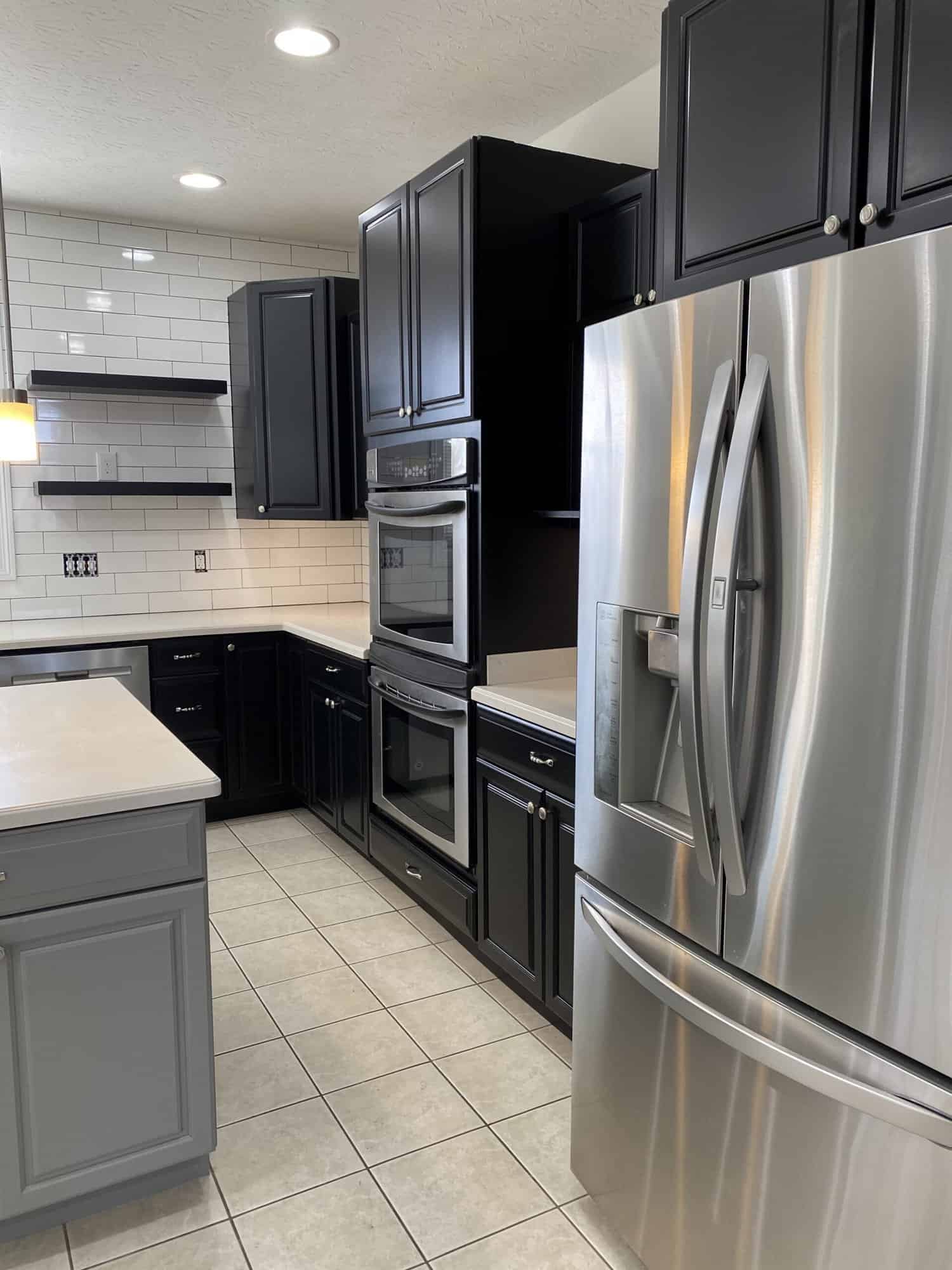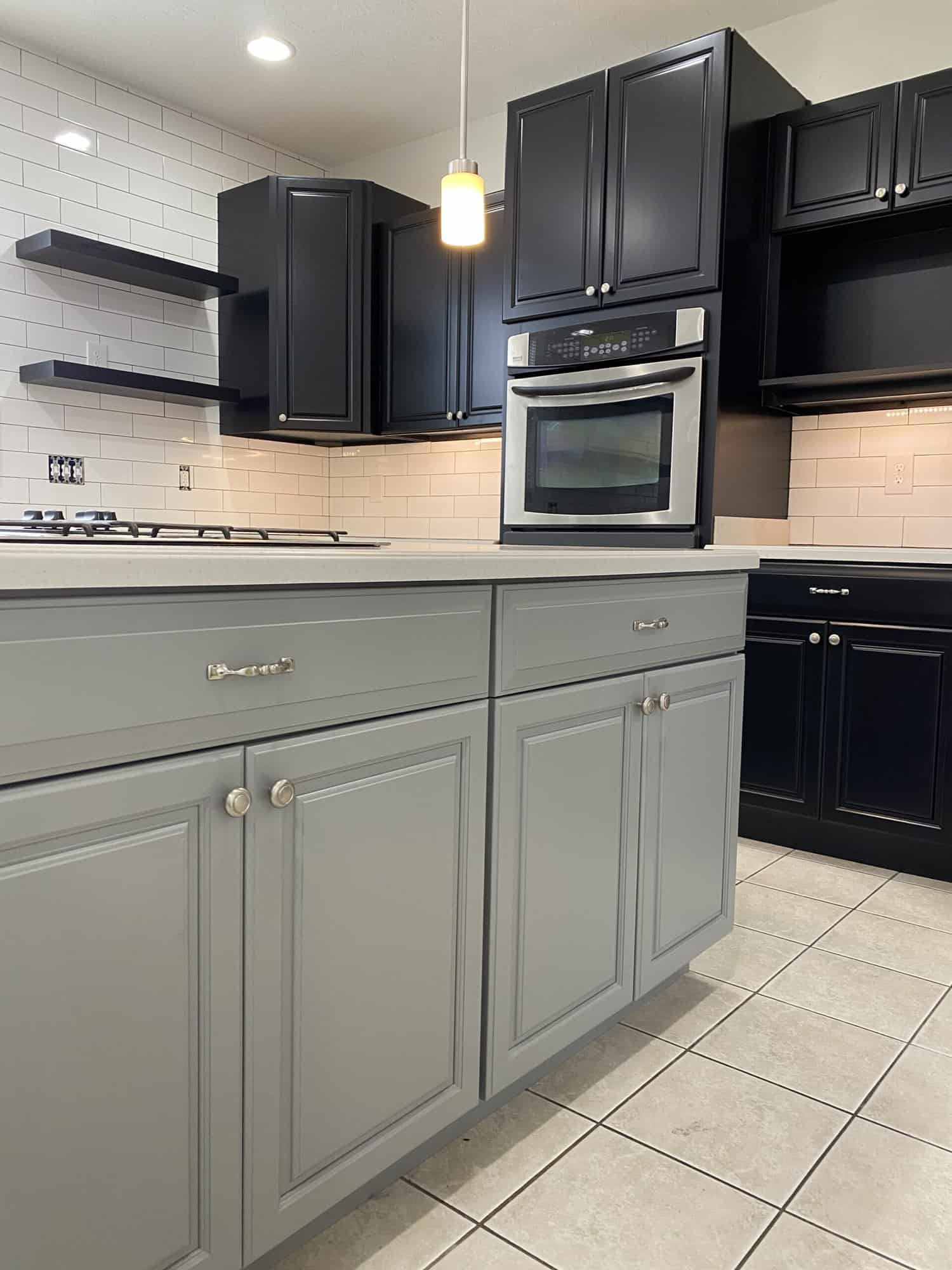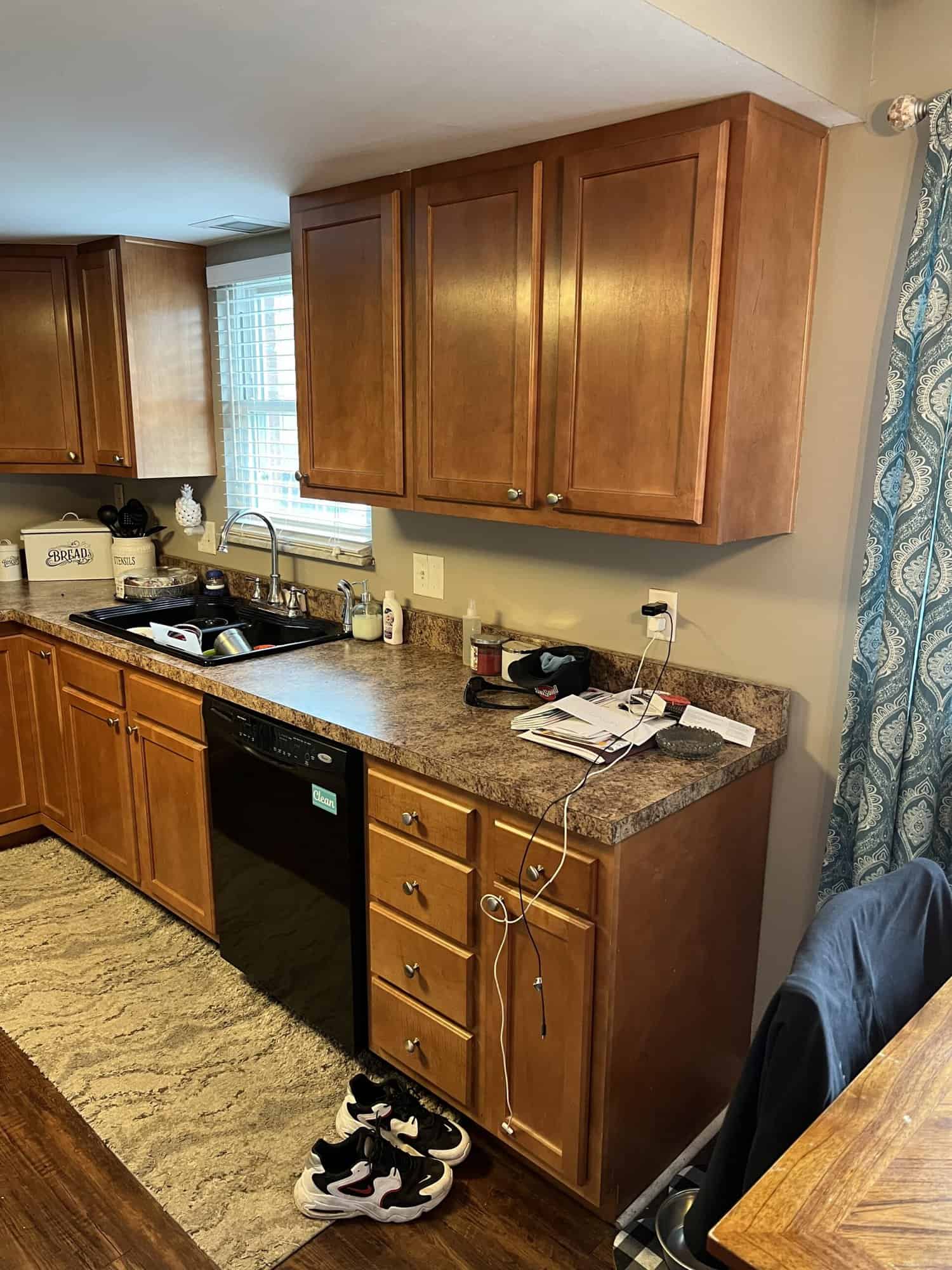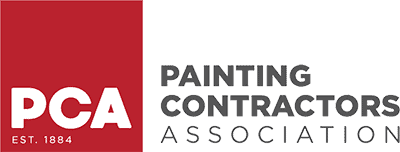Painted cabinets aren’t just a design choice—they’re an investment. They enhance the aesthetics of your home, increase property value, and serve as a reflection of your personal style. However, daily use can take a toll. Chipping, peeling, fading, and grime buildup can make even the most stunning cabinets look worn and outdated far too soon.
This guide will help you:
- Understand what causes damage to painted cabinets over time.
- Implement the best cleaning, maintenance, and protection strategies.
- Recognize when it’s time to invest in professional refinishing.
With the right care, your painted cabinets can remain vibrant, durable, and beautiful for years to come.
Understanding the Biggest Threats to Painted Cabinets
Moisture and Humidity
Moisture is one of the most damaging elements for painted cabinets. Both wood and paint are highly sensitive to water, and excess humidity or steam can lead to warping, swelling, and peeling paint.
Why It’s a Problem:
Moisture weakens paint adhesion, causing bubbling and flaking. Steam from cooking and dishwashers softens the paint, making it more prone to damage. Trapped moisture promotes mold and mildew, especially in cabinet corners.
To prevent this, use a dehumidifier or exhaust fan, wipe spills immediately, and install soft-close door bumpers for better airflow. Proper maintenance keeps painted cabinets durable and looking new.
Signs of Moisture Damage:
- Peeling or bubbling paint, particularly near sinks and dishwashers.
- A musty odor or visible mold spots inside cabinets.
- Swollen or warped cabinet doors that don’t close properly.
Prevention Tips:
- Install a dehumidifier or exhaust fan in high-moisture areas.
- Wipe up water spills and splashes immediately.
- Use cabinet door bumpers to improve airflow and reduce trapped moisture.
Heat and Sunlight Exposure
Heat and sunlight can wreak havoc on painted cabinets, causing discoloration, fading, and cracking over time.
Why It’s a Problem:
Heat from stovetops and ovens dries out paint, making it brittle. Direct sunlight fades and yellows lighter cabinet colors. Repeated exposure weakens the paint, increasing the risk of cracking.
To protect painted cabinets, use heat shields near stoves, close blinds to block direct sunlight, and choose UV-resistant paint when refinishing.
Signs of Heat Damage:
- Fading or yellowing of white and light-colored cabinets.
- Paint that feels brittle or cracked near heat sources.
Prevention Tips:
- Use heat shields between stoves and adjacent cabinets.
- Close blinds or curtains to block direct sunlight.
- Choose UV-resistant paint if repainting.
Daily Wear and Tear
Even with the best-quality paint, constant use can cause gradual damage. Frequent touching, slamming doors, and grease buildup all contribute to wear and tear on painted cabinets.
Why It’s a Problem:
Handles and edges endure constant friction, making them the first areas to show damage. Grease and grime build up over time, dulling the finish and making painted cabinets look worn. Repeated impact weakens the paint, causing chips and cracks that expose the surface underneath.
To minimize damage, clean these areas regularly, use knobs or pulls to reduce direct contact, and apply a protective topcoat for added durability.
Signs of Wear and Tear:
- Chipping or fading paint around handles, edges, and drawer fronts.
- Loose or misaligned cabinet doors.
Prevention Tips:
- Install soft-close hinges to reduce impact.
- Use knobs and handles instead of pulling directly on cabinet doors.
- Apply a clear protective topcoat to high-traffic areas.
Cleaning Painted Cabinets the Right Way
Best Cleaning Products for Painted Cabinets
Using the wrong cleaning products can strip or dull the finish on painted cabinets, leading to premature wear, discoloration, or peeling. Harsh chemicals break down the protective topcoat, while abrasive tools can leave scratches that make cabinets look aged before their time. Choosing the right products helps preserve their beauty and durability.
What to Use
Mild dish soap and warm water work well for everyday cleaning without harming the paint. White vinegar diluted with water is a natural solution that cuts through grease without leaving residue. Microfiber cloths are ideal for wiping down surfaces because they are soft and non-abrasive, preventing scratches.
What to Avoid
Bleach, ammonia, and alcohol-based cleaners strip the paint and can cause fading or softening over time. Magic erasers and scouring pads, though effective on tough stains, are too abrasive for painted surfaces and can wear away the finish.
Daily, Weekly, and Monthly Cleaning Routine
A structured cleaning routine keeps painted cabinets looking fresh while preventing grime buildup and long-term damage. Regular maintenance also helps extend the lifespan of the paint, reducing the need for frequent touch-ups or refinishing.
Daily Maintenance
Wipe up spills, grease, and food splatters immediately to prevent stains and damage. Dry cabinet surfaces after cleaning to avoid moisture seeping into the paint.
Weekly Routine
Use a soft cloth to remove dust, fingerprints, and light smudges. Clean handles, knobs, and other high-touch areas with a mild disinfectant to reduce buildup.
Monthly Deep Cleaning
Remove all items from cabinets and wipe down both interior and exterior surfaces. Check for small paint chips or scratches and apply touch-ups as needed to prevent further peeling.
Preventing Scratches, Chips, and Other Surface Damage
Handle With Care
Everyday habits can lead to scratches and chips, which gradually worsen if not addressed.
How Daily Use Affects Cabinets:
- Dragging cookware, utensils, or sharp objects against cabinet doors leaves scratches.
- Constant pulling and tugging at doors weakens hinges and paint.
Prevention Tips:
- Use cabinet liners to protect surfaces inside drawers.
- Avoid slamming doors—install soft-close hardware.
- Be mindful when placing heavy objects on cabinet shelves.
Touching Up Small Scratches and Chips
Minor chips can quickly lead to peeling and cracking if ignored.
How to Fix Minor Damage:
- Use matching paint and a small brush for touch-ups.
- Apply a clear sealer or wax for added protection.
- Sand lightly before repainting to blend the touch-up with existing paint.
Protecting Painted Cabinets from Long-Term Damage
Using Protective Coatings
A protective topcoat acts as a barrier against moisture, heat, and daily wear, helping painted cabinets maintain their color and durability. Without a protective layer, cabinets are more vulnerable to chipping, staining, and fading over time.
Best Options
Water-based polyurethane is a durable, low-odor option that dries clear, making it ideal for preserving the original cabinet color without yellowing. Paste wax provides a soft, satin finish that enhances the cabinet’s appearance while adding a layer of protection against minor scratches.
How to Apply
For the best results, lightly sand the surface before applying any protective coating. This ensures better adhesion and a smoother finish. Apply a thin, even coat and allow it to dry completely before using the cabinets. Multiple light layers offer better protection than a single thick coat.
Preventing Fading and Discoloration
Sunlight, grease, and harsh cleaning chemicals can cause painted cabinets to fade or discolor over time. Lighter-colored cabinets are especially prone to yellowing, while darker shades may lose their vibrancy.
Prevention Tips
Rotating decorative items and small appliances on the counter helps prevent uneven fading, ensuring all areas of the cabinets age uniformly. Applying a UV-resistant topcoat adds an extra layer of protection for cabinets near windows or in kitchens with strong natural light exposure.
With the right protective coatings and preventive measures, painted cabinets can maintain their color and finish for years, even in high-use areas.
When to Call a Professional for Cabinet Refinishing
If your painted cabinets have large sections of peeling or chipping paint, water damage that causes warping, or DIY touch-ups that look patchy and uneven, it may be time to call a professional. Expert refinishing ensures a smooth, even application using high-quality, commercial-grade paints that last longer than store-bought options.
Professionals also handle proper sanding, priming, and sealing, which helps extend the life of your cabinets and keeps them looking flawless for years.
Conclusion
With the right care, painted cabinets can stay beautiful for years. The biggest threats—moisture, heat, and daily wear—can be managed with proper cleaning, gentle handling, and protective coatings. If your cabinets are beyond basic maintenance, a professional refinishing job is the best long-term solution.
Want cabinets that look brand new for years? Start with small daily habits—and if your cabinets need expert care, reach out to us today!





